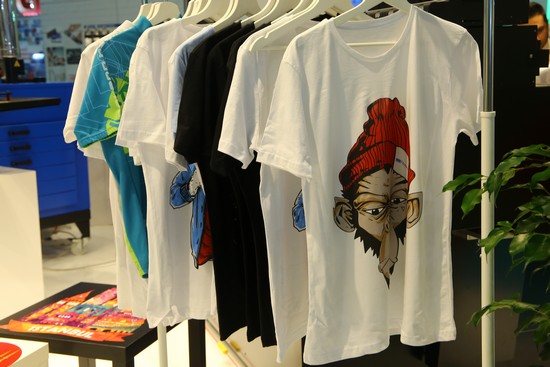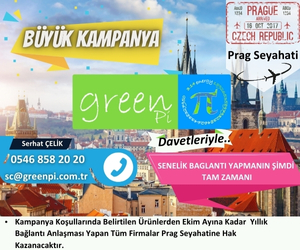Kategori : ENERGY AGENDA NEWS, GREEN TECHNOLOGY AND INFORMATION NEWS - Tarih : 24 May 2021
The textile printing industry is growing with the rapid developments in the fashion industry. In the textile market of 165 billion dollars, more than 30 billion square meters are printed annually in the world. The textile printing industry is working for a greener future with digital textile printing technologies. Digital textile printing machines can save up to 600% of water.
The textile printing industry is growing with the rapid developments in the fashion industry. In the textile market of 165 billion dollars, more than 30 billion square meters are printed annually in  the world. The textile printing industry is working for a greener future with digital textile printing technologies. Digital textile printing machines can save up to 600% of water.
the world. The textile printing industry is working for a greener future with digital textile printing technologies. Digital textile printing machines can save up to 600% of water.
According to the global printing federation FESPA, digital textile printing technologies are making the fashion world greener. With the rapid developments in the fashion industry, the textile printing industry is also transforming. More than 30 billion square meters of textile printing is made annually in the world in the textile market of 165 billion dollars. The printing industry is expected to grow as the world population continues to grow. With this growth, sustainable technologies are also gaining importance.
Uses 6 times less ink
In the world of sustainability, studies are carried out to minimize the use of resources. Digital textile printing machines significantly reduce the carbon footprint in production. Large amounts of water and ink are used in rotary screen printing in textiles. While rotary screen printing, 35-60 cc of ink is consumed per meter. In contrast, digital textile printing, which uses Piezo electric print heads that spray micro ink droplets onto the surface of the fabric, uses 6 to 9 cc of ink per meter.
In simple terms, this means that a 10,000-meter print run on a rotary-head printer will use more than 540 kilos of ink as opposed to the 90 pounds used by the digital printer. Since the main component in aqueous ink dispersions is water, this means 600% water savings with digital textile printers.
The greenest technologies will be introduced
Betül Binici, Fair Manager of FESPA Eurasia, which is the biggest industrial advertising and printing world meeting in the Eurasia Region, said, “The digital inkjet process offers a greener, cleaner footprint with both ink and printing technology. As FESPA Eurasia, we will host the newest and greenest technologies in the industry this year, ” he says.
Betül Binici says that FESPA Eurasia 2021, whose preparations are continuing at full speed, will bring the printing world together for the eighth time by taking all necessary measures at the Istanbul Expo Center (IFM) on 02-05 December 2021 as planned. Binici emphasizes that with new applications, creative applications will revive the sector also at the fair.
are making the fashion world greener. With the rapid developments in the fashion industry, the textile printing industry is also transforming. More than 30 billion square meters of textile printing is made annually in the world in the textile market of 165 billion dollars. The printing industry is expected to grow as the world population continues to grow. With this growth, sustainable technologies are also gaining importance.
Uses 6 times less ink
In the world of sustainability, studies are carried out to minimize the use of resources. Digital textile printing machines significantly reduce the carbon footprint in production. Large amounts of water and ink are used in rotary screen printing in textiles. While rotary screen printing, 35-60 cc of ink is consumed per meter. In contrast, digital textile printing, which uses Piezo electric print heads that spray micro ink droplets onto the surface of the fabric, uses 6 to 9 cc of ink per meter.
In simple terms, this means that a 10,000-meter print run on a rotary-head printer will use more than 540 kilos of ink as opposed to the 90 pounds used by the digital printer. Since the main component in aqueous ink dispersions is water, this means 600% water savings with digital textile printers.
The greenest technologies will be introduced
Betül Binici, Fair Manager of FESPA Eurasia, which is the biggest industrial advertising and printing world meeting in the Eurasia Region, said, “The digital inkjet process offers a greener, cleaner footprint with both ink and printing technology. As FESPA Eurasia, we will host the newest and greenest technologies in the industry this year, ” he says.
Betül Binici says that FESPA Eurasia 2021, whose preparations are continuing at full speed, will bring the printing world together for the eighth time by taking all necessary measures at the Istanbul Expo Center (IFM) on 02-05 December 2021 as planned. Binici emphasizes that with new applications, creative applications will revive the sector also at the fair.





